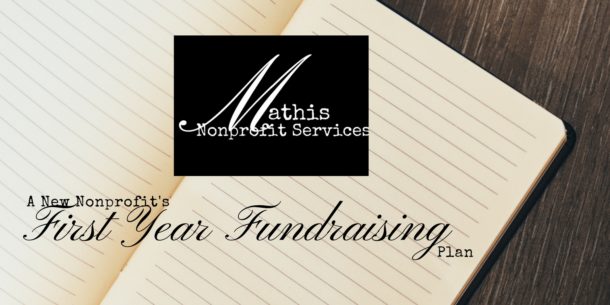Do you struggle with newsletters? I know I did when I was writing them for an organization. It’s so hard to come up with new and different content each and every time. For me it was even worse because I had a 24-page magazine that I had to publish. I was the writer, the editor, the photographer, and everything in between. I know for me the struggle was always time and content ideas. If that’s you, then this Nonprofit Insiders Club Edition is for you.
The goal of my newsletters is always to steward the relationship and create donors. That doesn’t mean I always ask for money. I thank and give impacts three times before I ask.
I don’t look at open rates. I want engagement. So I want to see that people clicked the links in the newsletter (like our Facebook page, join the Facebook group, contact us for a tour, hit reply and tell me what you think about xyz). I want those micro-conversions or micro-commitments so when I send an appeal letter, they are more likely to click the donate button. My subject of the email is always a hook. Maybe it’s the climax to a client story, an unexpected phrase, or a sentence that trails off. Something that opens a loop that (as humans) we must close. To do that, we have to open the email.
One of the best strategies that I found to accomplish my goals and have time to do it all was a combination of the bucket and batching methods. I know you’re probably thinking what is this about?!? Now being a nonprofit, when we hear of buckets we think of funding buckets right? That was actually the very first analogy I got to how nonprofits work. My supervisor sat me down and explained to me that funding in a nonprofit belonged in buckets. Now it wasn’t physical buckets but they were more of line item “buckets” in a budget. Once the money was in a “bucket” it couldn’t leave unless it was spent on what the bucket was intended. So when I ran across this bucket strategy it really wasn’t a new concept for me. What was new was applying it to content.
Bucket Strategy
So what is the bucket strategy? I’m glad you asked. The bucket strategy starts with sitting down and deciding on five categories that you want to write about in each newsletter. One bucket can be a client feel-good story. Tell the story of your client. The organization is always the guide in the story and the story pivots to the donor where they become the hero. Then, the rest of the story is about how the donor transformed the client’s world by making a difference. Another bucket may be donor stories. If it’s a donor spotlight piece, then it’s all about the donor’s story and their transformation through giving. Another bucket is missional impact. If you have a strong mission, break it up into sections, and write stories that fall into those sections. For example, a nonprofit has the mission statement: In response to Christ and the Church, the mission of The Methodist Home for Children and Youth is to be a model agency that restores childhoods, strengthens families, and cultivates a people-building organization. I took Restores Childhoods and collected stories of the kids to show impact. Strengthens families had programs that fit that part of the mission statement so I did stories on the impact of those programs through stories and so on.
Another great thing about buckets is that when you hear a great story, you can grab it right then and put it in the bucket it fits in. You will always have a story ready for presentations, grants, and any time you need content.
What Is Content Batching?
Content batching is a technique where you write many pieces of content at once. You save time because you can get large quantities of content done at one time. It’s even better when you group the same content together because you can get “in the zone” and not have to change your mental gears. I’ve used it for newsletter stories, emails, and thank you letters.
How Do You Batch Content?
To figure out your content, brainstorm 20 topics per bucket you decided on earlier. Don’t censor yourself- just write. Go back and decide on the best 10. You now have 50 stories to tell, giving you a year’s worth of weekly content. All you have to do is find and write the stories. Take a week to ask program staff for stories and interview the clients or donors that you can. Then write the stories the following week. If you write 12, you’ll have weekly content for a quarter.
What buckets will you create? Join the conversation on Facebook.


 Most nonprofit leaders lay awake at night trying to figure out how to fund their mission.
Hi! I'm Alesha.
I teach sustainable fundraising in a way that they can take action today so they can serve their clients.
I can help you move from just getting started funding your new nonprofit to gaining confidence in your fundraising and building relationships to knowing what works for your organization and looking at the infinite game when it comes to funding. I’ve worked with nonprofit Founders and written the book I HAVE MY 501(C)3! NOW WHAT?!? Your Blueprint to Starting Your Nonprofit Without Being the Sole Funder that lays the foundations for funding in a new nonprofit.
I’ve worked in Development (Fundraising) Departments in large organizations and I know the no cost, low-cost methods they use to bring in funding. I bring those sound strategies to the nonprofits I serve.
Most nonprofit leaders lay awake at night trying to figure out how to fund their mission.
Hi! I'm Alesha.
I teach sustainable fundraising in a way that they can take action today so they can serve their clients.
I can help you move from just getting started funding your new nonprofit to gaining confidence in your fundraising and building relationships to knowing what works for your organization and looking at the infinite game when it comes to funding. I’ve worked with nonprofit Founders and written the book I HAVE MY 501(C)3! NOW WHAT?!? Your Blueprint to Starting Your Nonprofit Without Being the Sole Funder that lays the foundations for funding in a new nonprofit.
I’ve worked in Development (Fundraising) Departments in large organizations and I know the no cost, low-cost methods they use to bring in funding. I bring those sound strategies to the nonprofits I serve.